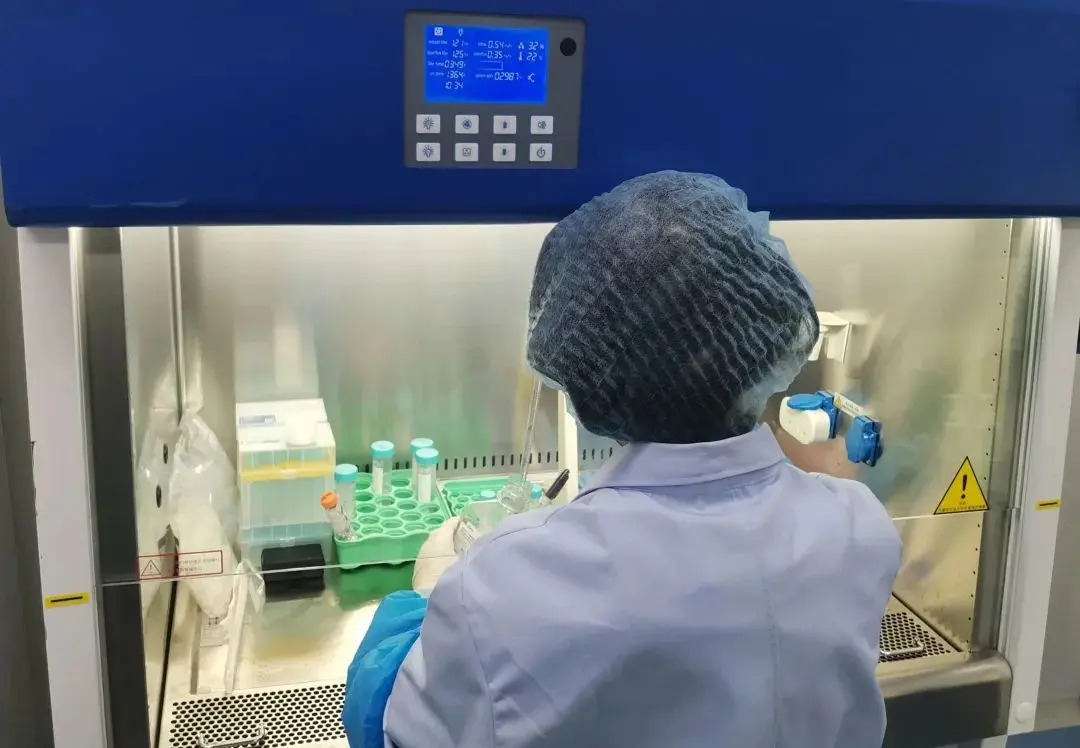
Vaginal Irritation Test ISO10993-23:2021
Since the epithelium of the vaginal mucosa forms a natural barrier in the human body against viral and bacterial invasion, improper use or ingREDients with irritative properties can potentially damage the vaginal mucosa, leading to various infections. The vaginal mucosal irritation test plays a crucial role in assessing the effects of hygiene products, cosmetics, pharmaceuticals, medical devices, and other products intended for vaginal use on human health.
Through conducting vaginal mucosal irritation tests, we can simULate the impact of products on the vaginal mucosa during actual use, thereby evaluating their safety and irritative potential. This provides scientific basis for product market approval and ensures safer and more reliable products for consumers, thereby protecting consumer health.

vaginal irritation tests should only consider materials intended for contact with vaginal tissues, including:
- Medical devices: such as gynecological examination instruments, vaginal drug delivery devices, etc.
- Family planning products: such as condoms, contraceptive rings, etc.
- Hygiene products: such as sanitary pads, panty liners, wet wipes, etc.
- Disinfectants: such as feminine washes, disinfectant gels, etc.
These tests should only be considered when safety data cannot be obtained through other methods.
Test Basis:
Biological evaluation of medical devices - Part 10: Tests for irritation and skin sensitization GB/T 16886.10-2017 Appendix B.6
Biological evaluation of medical devices - Part 10: Tests for irritation and delayed hypersensitivity iso 10993-10:2010
Hygienic standards for disposable sanitary products G 15979-2002
Biological evaluation of medical devices - Part 23: Tests for irritation iso 10993-23:2021 Appendix D.6
JJR Laboratory in China provides Vaginal Irritation Test ISO10993-23:2021. We are an accredited laboratory under IEC 17025, GLP, CMA, and CNAS, capable of helping you save 30% on certification testing costs.
Evaluation Materials:
During testing and interpretation of irritation/allergic reaction test data, factors such as the nature, extent, frequency, duration, and conditions of contact of medical devices during human application should be considered. Preparation of test materials is one of the critical factors in these tests.
Extraction conditions are based on standardized methods that are typically feasible and validated, often involving more stringent conditions than actual product use. Extractions should be performed under:
a) (37±1) ℃ for (72±2) hours;
b) (50±2) ℃ for (72±2) hours;
c) (70±2) ℃ for (24±2) hours;
d) (121±2) ℃ for (1±0.1) hour.
Both polar and non-polar solvents should be used during extractions. Examples of extraction media include:
a) Polar extraction media: water, saline solution;
b) Non-polar extraction media: freshly refined vegetable oils meeting pharmacopeial quality requirements (e.g., cottonseed oil or sesame oil);
c) Other extraction media: ethanol/water, ethanol/saline solution, polyethylene glycol 400 (diluted to physiological osmolarity), dimethyl sulfoxide.
Animal and Management:
Healthy, young adult female albino rabbits of the same strain, weighing not less than 2 kg, should be used. Use of other species should be justified.
Animals should be acclimated to their environment and maintained according to ISO 10993-2.
Initial trials should evaluate the test material on at least 3 animals, with an additional 3 animals as controls. Re-testing should be considered if initial reactions are ambiguous or suspected.
Before each test operation, vaginal discharge, edema, and/or signs of infection, irritation, and/or injury should be checked. Vaginal examination during estrus stages is also necessary to avoid false positive reaction determinations due to physiological changes in the vagina.
Test Procedure:
A short flexible tube (6 cm) or blunt-end cannula should be connected to a syringe with a capacity greater than 1 mL. Each animal should have its own set of syringe and connecting tube.
The cannula should be lubricated with a control solution or appropriate lubricant.
Gently expose the vaginal orifice by lifting the animal's tail, then gently insert the lubricated cannula into the vagina and inject 1 mL of the test sample using the syringe. Withdraw the cannula and dispose appropriately.
Due to differences in individual vaginal volume, overflow may occur during or after sample injection, which can be gently wiped away with a soft tissue.
Repeat the above steps every (24±2) hours for at least 5 consecutive days.
For long-term repeated exposure tests, test doses, number of exposures, duration, and intervals should be determined based on expected clinical applications.
Animal Observation:
After initial exposure (24±2) hours and before each test operation, observe and record signs of vaginal discharge, erythema, and edema at the vaginal orifice and perineal region.
Animals showing excessive discharge, erythema, or difficulty in dosing should be euthanized painlessly for histological examination.
Evaluation of Results:
Macroscopic Evaluation:
After the final exposure (24±2) hours without euthanizing the animals painlessly, remove and longitudinally section the vagina to inspect for signs of irritation, damage, and necrosis in the epithelial tissue layer.
Fix removed vaginal tissues in appropriate fixatives for histological examination. Each piece of vaginal tissue should be taken from both ends and the central portion.
Compare the vagina of animals exposed to the test material with that of control animals.
Record and describe the condition of vaginal tissues of each animal under macroscopic observation, noting differences between the test and control groups.
Note: These observations may contribute to histological evaluations.
Histological Evaluation:
Histopathologists should evaluate the irritative effects on vaginal tissues using a scoring system similar to the one used for oral, penile, rectal, and vaginal tissue response MICroscopic examination systems. The total score for microscopic evaluation of all animals in the test group should be divided by the total number of observations to obtain the average score for the test group. The maximum score is 16. Calculate the same way for the control group.
If control animals show a total microscopic evaluation score greater than 9, it suggests possible damage during the test procedure. If similar high scores appear in other tests or control animals, re-testing may be necessary.
Email:hello@jjrlab.com
Write your message here and send it to us
 Is ASTM F963 Testing for Children's Toys Exported
Is ASTM F963 Testing for Children's Toys Exported
 CPC & CE Certifications for Children’s Toys on
CPC & CE Certifications for Children’s Toys on
 Children's Product Certificate CPC Requirements CP
Children's Product Certificate CPC Requirements CP
 Canadian Children's Toy Testing Standard SOR/2011-
Canadian Children's Toy Testing Standard SOR/2011-
 Canada Children's Toy Certification Compliance Gui
Canada Children's Toy Certification Compliance Gui
 Australian Children's Toy Certification AS/NZS ISO
Australian Children's Toy Certification AS/NZS ISO
 Bluetooth Headphones Export to Thailand: Complianc
Bluetooth Headphones Export to Thailand: Complianc
 Power Bank Transportation Compliance UN 38.3 Repor
Power Bank Transportation Compliance UN 38.3 Repor
Leave us a message
24-hour online customer service at any time to respond, so that you worry!




